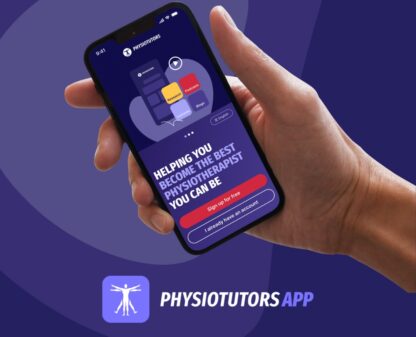Complex Regional Pain Syndrome

Body Chart

- Forearm and hand
- Knee, calf, and foot
Background Information
Patient Profile
- Commonly 40-50 years old (but also children and elderly)
- Fracture in history
- Female > Male (2-3:1)
- Upper extremity > Lower extremity (2:1)
Pathophysiology
Trigger
- Fracture or surgery (40%), surgical median nerve decompression (30%), traumatic nerve- or myelonlesion, trivial trauma, idiopathic
- Typically no correlation between severity of the trauma and severity of CRPS
Source
- Genetic predisposition not proven but assumed plausible
- Central pain mechanisms
- Dysfunction of tissue healing mechanisms and vegetative nervous system
Pain Mechanisms
- Peripheral nociceptive: neurogenic inflammation; release of substance P, increase in pro-inflammatory zytokines – decrease of anti-inflammatory zytokines
- Peripheral neurogenic: neural lesion in CRPS 2
- Central mechanisms: Cortical changes, representation of affected extremity changes in somatosensory cortex
- Output: Widespread autonomic disturbances; vegetative disturbances; trophic changes
Course
Constant. Independent from time of day. Spontaneous exacerbations. Highly dependent on individual factors. Early management increases chances of rehabilitation, multidisciplinary management for optimal results.
History & Physical Examination
History
CRPS 1: Commonly trauma in history but also trivial trauma as possible cause; wearing a cast for several weeks
CPRS 2: Surgery or neural tissue trauma in history. Usually short history as diagnosis is made relatively fast by specialist
- Constant pain with exacerbations
- Burning
- Stinging
- Aching
- Deep (muscle/bones 68%) > superficial (skin 32%)
- Weakness
- Myoclonus
- Dystonia
- Temperature difference
- Perspiration
- Skin discoloration/surface changes
- Dysesthesia
- Not clearly associated with a specific innervated area
Physical Examination
Inspection & Palpation
Skin color changes, Perspiration disturbed at affected site, atrophy, hair and nail growth increased, skin temperature changes, contractures
Active Examination
Loss of strength, limited ROM in affected joints due to edema: in later stages fibrosis
Functional Assessment
Inability to make a fist, gait disturbances, fine motor tasks impaired
Neurological
Motor: Pincer grip & making a fist are weak; grasping objects only with visual help; tremor; myoclonus and dystonia.
Sensory: Allodynia and hyperalgesia; sensory disturbance (hyperesthesia or hypalgesia)
Passive Examination
PROM limited in affected joints
Additional Tests
Graphestesia: Drawn shapes (numbers, letters) are not recognized in affected area; Two Point Discrimination (TPD) increased in affected area; drawing of own body: affected limb depicted smaller in size
Differential Diagnosis
- Rheumatic diseases
- Inflammation (e.g. post-surgical infection)
- PAD
- Thromboembolic disorders
- Compartment syndrome
- PEP
Treatment
Strategy
Individualized graded exposure. Start early therapy to reduce the risk of chronicity
Interventions
- Reduce edema
- Explain pain
- Recognition: Recognizing body parts on pictures
- Imaginary movements: Picture showing a movement and imagine how to do that movement
- Mirror therapy: Activation of mirror neurons influences frontal cortex
- Antiinflammatory, antineuropathic, antioxidative drugs, opioids
- Spinal cord stimulation in severe chronic pain
- Occupational therapy
- Psychotherapy
References
- Birklein, F., O’Neill, D., Schlereth, T. (2015). Complex regional pain syndrome: An optimistic perspective. Neurology, 84(1), 89-96.
- Dijkstra, P. U., Groothoff, J. W., ten Duis, H. J., Geertzen, J. H. (2003). Incidence of complex regional pain syndrome type I after fractures of the distal radius. Eur J Pain, 7(5), 457-462.
- Furlan, A. D., Mailis, A., Papagapiou, M. (2000). Are we paying a high price for surgical sympathectomy? A systematic literature review of late complications. J Pain, 1(4), 245-257. doi: 10.1054/jpai.2000.19408
- Geertzen, J. H., de Bruijn-Kofman, A. T., de Bruijn, H. P., van de Wiel, H. B., Dijkstra, P. U. (1998). Stressful life events and psychological dysfunction in Complex Regional Pain Syndrome type I. Clin J Pain, 14(2), 143-147.
- Harden, R. N., Oaklander, A. L., Burton, A. W., Perez, R. S., Richardson, K., Swan, M., Association, R. S. D. S. (2013). Complex regional pain syndrome: practical diagnostic and treatment guidelines, 4th edition. Pain Med, 14(2), 180-229.
- Kolb, L., Lang, C., Seifert, F., & Maihöfner, C. (2012). Cognitive correlates of neglect-like syndrome in patients with complex regional pain syndrome. Pain, 153(5), 1063-1073.
- Maihöfner, C. (2014). [Complex regional pain syndrome: A current review]. Schmerz, 28(3), 319-336; quiz 337-318. doi: 10.1007/s00482-014- 1421-7
- Maihöfner, C., Seifert, F., & Markovic, K. (2010). Complex regional pain syndromes: new pathophysiological concepts and therapies. Eur J Neurol, 17(5), 649-660.
- Marinus, J., Moseley, G. L., Birklein, F., Baron, R., Maihöfner, C., Kingery, W. S., van Hilten, J. J. (2011). Clinical features and pathophysiology of complex regional pain syndrome. Lancet Neurol, 10(7), 637-648.
- Moseley, G. L. (2004). Graded motor imagery is effective for long-standing complex regional pain syndrome: a randomised controlled trial. Pain, 108(1-2), 192-198.


